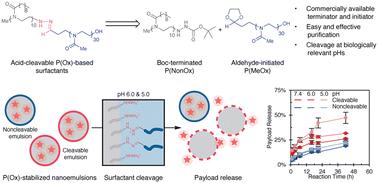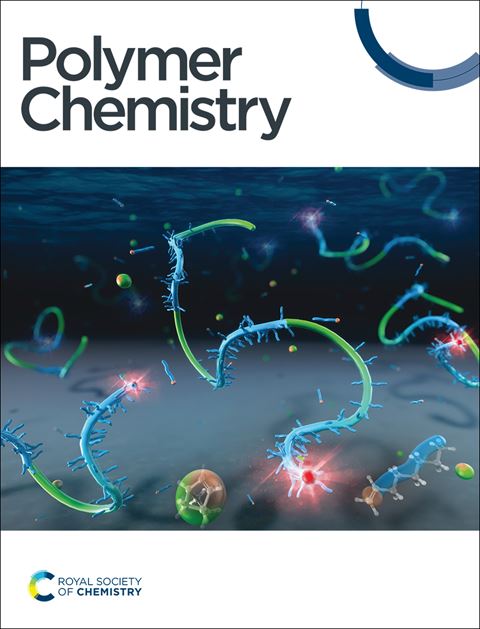Acid-cleavable poly(oxazoline) surfactants†
IF 4.1
2区 化学
Q2 POLYMER SCIENCE
引用次数: 0
Abstract
The acidic tumor microenvironment and late endosomes present a promising target for stimuli-responsive nanotherapeutics. Acid-cleavable surfactants, particularly those with hydrazone linkages, offer enhanced stability outside the cell while enabling efficient intracellular payload release. Their acid-triggered cleavage and cationic byproducts facilitate endosomal escape, making them attractive for cancer nanomedicine. Herein, we report the synthesis of a new hydrazone-linked poly(oxazoline)-based diblock copolymer surfactant. This surfactant cleaves in a pH-dependent manner going from pH 7.4 down to pH 5.0, where after 21 h, 80% ± 3% of the hydrazone-linked polymer remained at pH 7.4 compared to 17% ± 2% at pH 5.0. We then demonstrate the ability of nanoemulsion encapsulated payloads to partition into cell membrane mimics only after cleavage of the surfactant. Through this system, we were able to increase the amount of payload release from 26% to 47% over 42 hours through pH changes. In all, this work demonstrates a viable route to create POx-based nanomaterials with controlled release capabilities in biologically relevant conditions and is a promising platform for advancing the endosomal escape and cancer targeting of nanomaterials.


求助全文
约1分钟内获得全文
求助全文
来源期刊

Polymer Chemistry
POLYMER SCIENCE-
CiteScore
8.60
自引率
8.70%
发文量
535
审稿时长
1.7 months
期刊介绍:
Polymer Chemistry welcomes submissions in all areas of polymer science that have a strong focus on macromolecular chemistry. Manuscripts may cover a broad range of fields, yet no direct application focus is required.
 求助内容:
求助内容: 应助结果提醒方式:
应助结果提醒方式:


